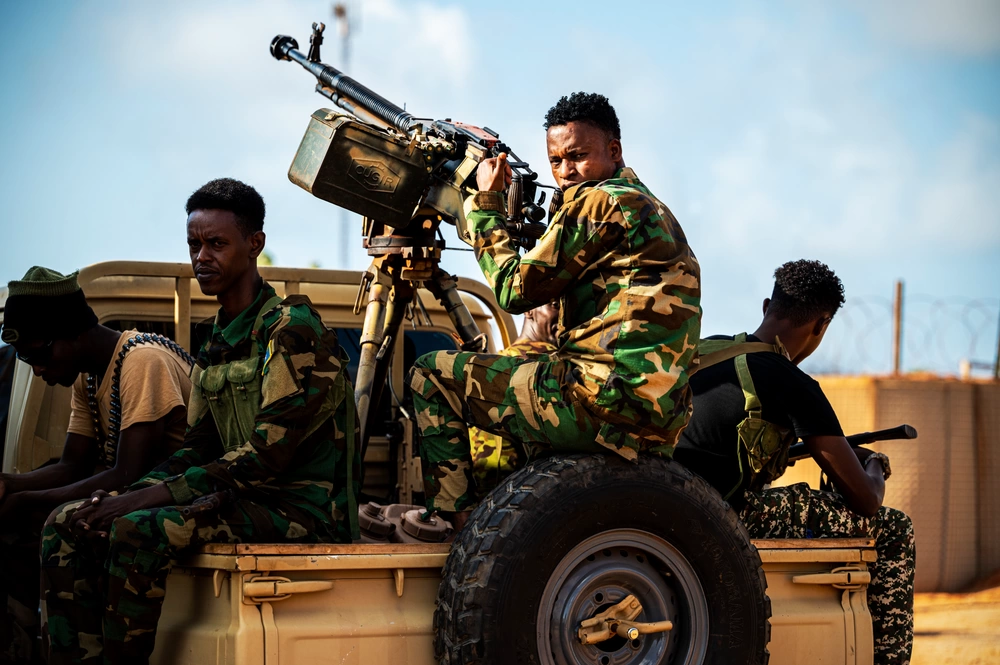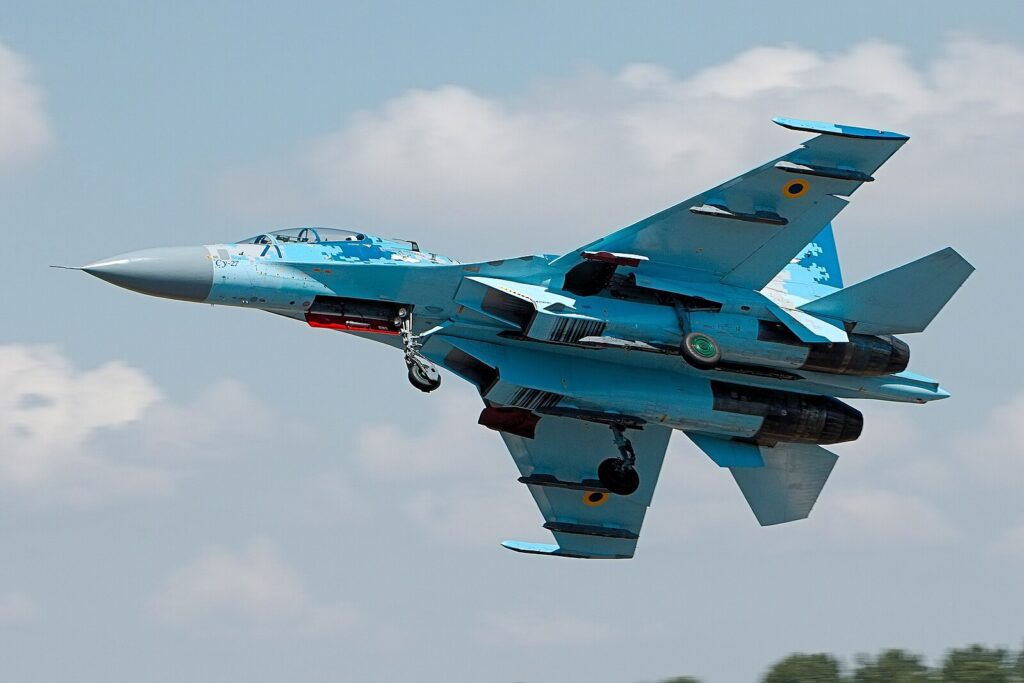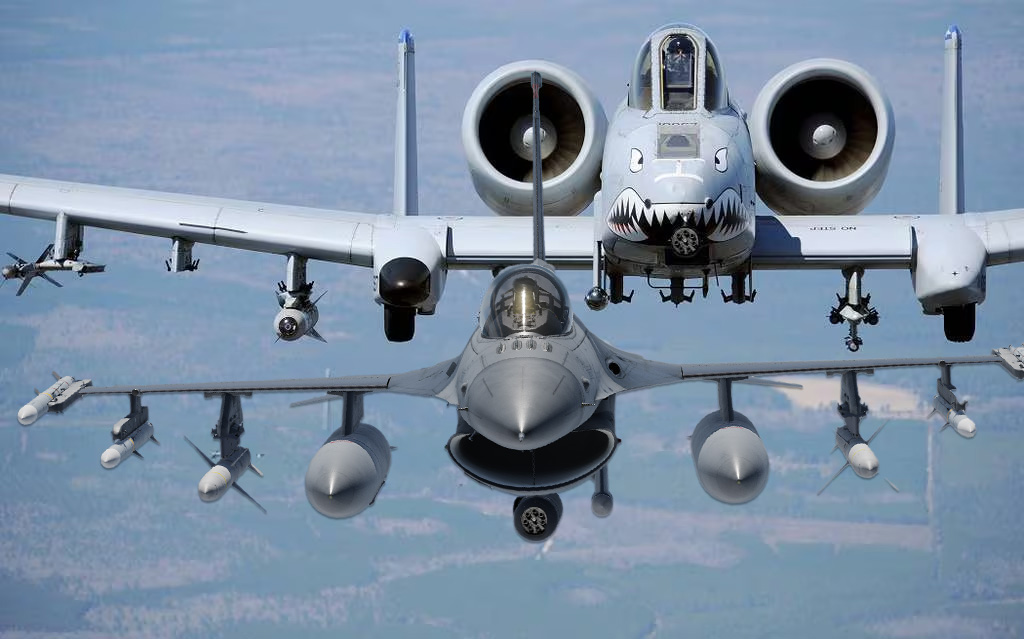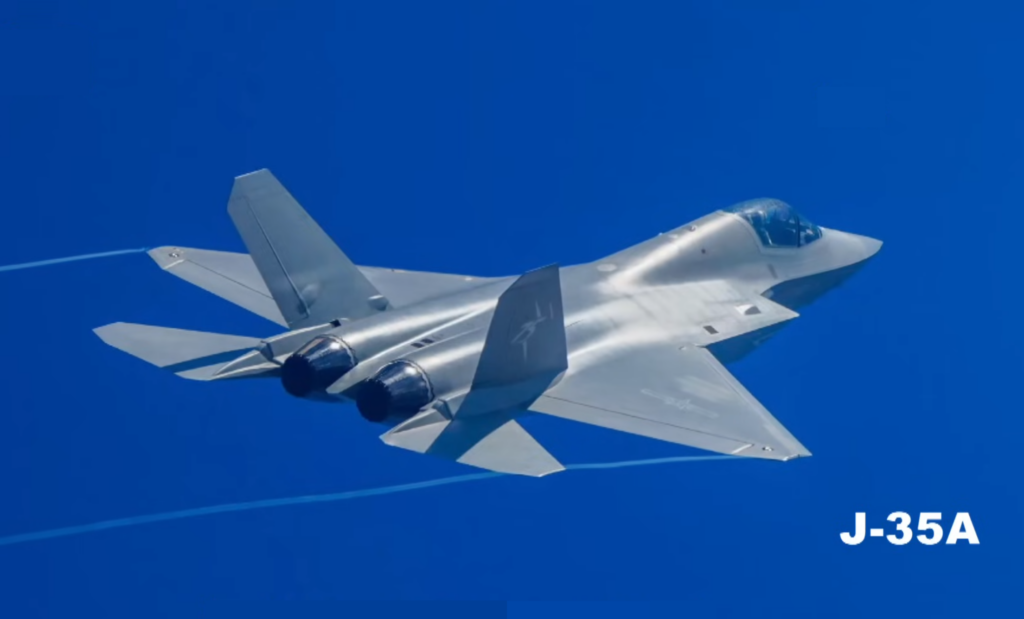US air strikes kill 15 al-Shabaab terrorists in Somalia
- By Steve Balestrieri
Share This Article

The United States conducted two airstrikes in Somalia on December 14 and 17, targeting al-Shabaab terrorists and killing 15 of them at two locations about 125 miles northeast of the capital of Mogadishu in Somalia’s Hirshabelle State, US Africa Command (AFRICOM) said Sunday.
The first airstrike killed seven terrorists and the second eight more in what the U.S. characterized as “collective self-defense,” which the Somali government had requested in support of Somali National Army forces.
AFRICOM said in a released statement that the airstrikes caused no civilian casualties.
“U.S. Africa Command will continue to assess the results of these operations and will provide additional information as appropriate,” the statement added. “Specific details about the units involved and assets used will not be released in order to ensure operations security.”
There are as many as 5,000-7,500 al-Shabaab fighters across Africa.

Terrorists from al-Shabaab carried out several attacks in Somalia this year, including the double bombings in Mogadishu in late October that killed more than 100 and wounded more than 300. In response, the U.S. conducted an airstrike that took out al-Shabab leader Abdullahi Nadir.
“Al-Shabab is the largest and most kinetically active al Qaeda network in the world and has proved both its will and capability to attack U.S. forces and threaten U.S. security interests,” AFRICOM said at the time.
The terrorist organization has been attempting to overthrow the Somali government for the past 15 years.
President Biden had initially stopped U.S. airstrikes on al-Shabaab and then recommenced them on a much smaller scale in 2021. This year, the U.S. has conducted 12 airstrikes on al-Shabaab.
However, last week Somali President Hassan Sheikh Mohamud said he would like the U.S. to ease the restrictions on drone strikes but didn’t identify which restrictions he would like to see loosened.
In May, President Biden also ordered U.S. trainers, who had been training the U.S.-funder Somali special operations unit Danab Brigade, back into the country; they had been removed in 2019 under President Trump. The reintroduction of the trainers will help with the Danab Brigade’s planned expansion from 1,500 to 3,000 troops.
Danab Brigade gives Somali people hope

The Danab Brigade was created in 2014 and has been trained by the U.S. special operations forces and Bancroft, a civilian contractor.
Some of the funding for Danab comes from the 127e program, which allows the Special Operations Command (SOCOM) the authority to use local military units as partners in counterterrorism missions. The rest of the equipment purchases fall under Title 10 through which the U.S. military can supply a foreign nation’s counterterrorism forces.
Over the weekend, Danab commandos were back in the town of Bukure, a place they took in September after heavy fighting. “We managed to kill 60 al-Shabaab fighters here,” said Sergeant Halane of Danab. But as hundreds of the terrorists withdrew, they set fires to many homes and shops and blew up the town’s concrete water town.
A local community leader, Ali Dahir Warsame, 48, told the BBC, “under al-Shabaab, we slept afraid every night.” The locals are sick of al-Shabaab’s twisted form of Islam.
“But we understand now that [al-Shabaab] has nothing to do with Islam. They have been harming innocent people. Now we’re 100% confident that they won’t come back here.”
The Danab commandos have a lot to do with that and by supporting the unit, the U.S. is generating goodwill in the country.
“The US? They’re the good guys. They helped us with drones in the [battle for Bukure]. I’ve fought more than six battles against al-Shabab, and now, when they see we want to fight, they run,” said one senior Danab officer in the town.
Now it is up to Somalia’s weak, fledgling government to take charge and support the people who are trying to rid themselves of al-Shabaab forever. It will be a long struggle, but there is an opening for just that.
Feature Image: An MQ-9 Reaper sits on the flight line at Creech Air Force Base, Nevada, Dec. 17, 2019. (U.S. Air Force photo by Senior Airman Haley Stevens)
Read more from Sandboxx News
- Plausible deniability: Russian Mercenaries in the Central African Republic (CAR)
- Marine Corps’ elite MARSOC operators have been getting ready for the future
- China wants a Navy base in Africa that would put America’s East Coast within reach
- Al-Shabab resurfaces in Africa and invades Ethiopia
- British Intel once hacked al-Qaeda just to mess with them
Related Posts
Sandboxx News Merch
-

‘Sandboxx News’ Dad Hat
$27.00 Select options This product has multiple variants. The options may be chosen on the product page -

‘AirPower’ Golf Rope Hat
$31.00 Select options This product has multiple variants. The options may be chosen on the product page -

‘Kinetic Diplomacy’ Bumper Sticker (White)
$8.00 Add to cart
Steve Balestrieri
Related to: Breaking News, Military Affairs

Where do NATO reporting names come from?

How US Special Forces took on Wagner Group mercenaries in an intense 4-hour battle

F-16s carrying the A-10’s 30mm cannon actually saw combat

How does China’s new J-35 stealth fighter compare to America’s F-35?
Sandboxx News
-

‘Sandboxx News’ Trucker Cap
$27.00 Select options This product has multiple variants. The options may be chosen on the product page -

‘AirPower’ Classic Hoodie
$46.00 – $48.00 Select options This product has multiple variants. The options may be chosen on the product page -

‘AirPower’ Golf Rope Hat
$31.00 Select options This product has multiple variants. The options may be chosen on the product page -

‘Sandboxx News’ Dad Hat
$27.00 Select options This product has multiple variants. The options may be chosen on the product page
